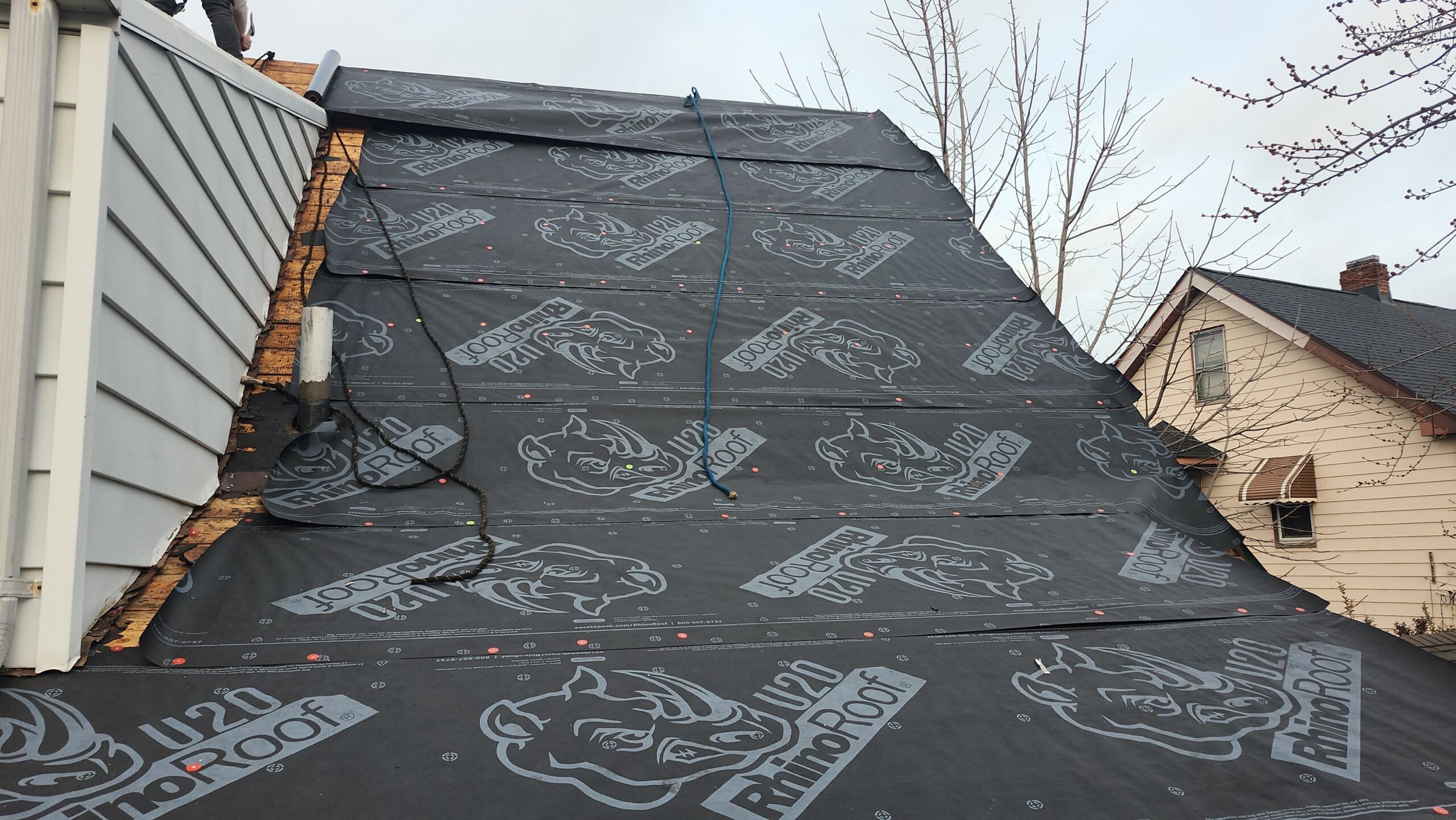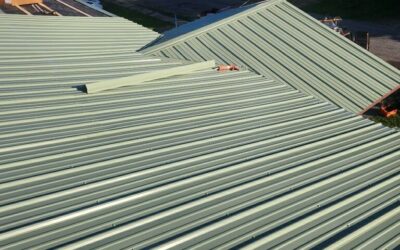Understanding Valley Flashing and Ice Guard in Ohio Roofing: A Comprehensive Guide
When it comes to roofing systems in Ohio, homeowners and business owners need to be aware of various components that contribute to the protection, durability, and efficiency of their roofs. Two crucial features that often come up in roofing discussions are valley flashing and ice guard. These elements play a vital role in safeguarding your roof from water damage, ice dams, and other weather-related issues, especially in regions like Ohio that experience extreme temperatures, heavy snowfall, and freezing rain.
In this guide, we will explore what valley flashing is, its importance in Ohio roofing, and the crucial role of ice guard in preventing damage during the winter months.
What is Valley Flashing?
Valley flashing is a critical roofing component used in the valleys of a roof. The valley is the area where two roof slopes meet, forming a “V” shape. Water naturally flows into this area when it rains or snows. Without proper protection, the water can seep into the roofing materials, causing significant damage over time. This is where valley flashing comes in.
Valley flashing is a metal sheet or strip that is installed along the valleys to prevent water from leaking into the roof deck. It channels water safely off the roof, directing it away from the vulnerable areas where the roof slopes meet. The flashing is typically made from materials like aluminum, copper, or galvanized steel, providing durability and resistance to corrosion.
The Importance of Valley Flashing in Ohio Roofing
In Ohio, valley flashing is even more crucial because of the state’s climate. Ohio experiences a wide range of weather conditions, from heavy rains in the spring and summer to significant snowfalls and freezing temperatures in the winter. The proper installation of valley flashing ensures that the roof remains watertight during all seasons.
Preventing Water Damage
One of the primary functions of valley flashing is to prevent water damage. During heavy rain or snowmelt, water can pool in the valleys of your roof. If there is no valley flashing to redirect the water, it can seep through the roofing material and into the roof deck. This can lead to mold, rot, and even structural damage.
Ice Dams and Snowmelt
In Ohio, ice dams are a common issue during the winter months. Ice dams occur when heat from the home melts the snow on the roof, causing the water to flow down toward the eaves. When the temperature drops, this water can refreeze, creating a dam of ice that blocks further water from draining off the roof. This can lead to water backing up under shingles and causing leaks inside the home.
Valley flashing helps mitigate the effects of ice dams by providing a clear path for water to flow off the roof and away from the building. By keeping the valleys clear and directing water safely off the roof, valley flashing reduces the risk of ice dams and water damage.
How Valley Flashing is Installed
The installation of valley flashing is a precise and delicate process that requires experience and knowledge of roofing techniques. Here’s an overview of how valley flashing is typically installed:
- Prepare the Roof Deck: Before installing valley flashing, the roof deck (the surface beneath the roofing material) must be inspected and cleaned to ensure there is no damage or debris.
- Apply Ice and Water Shield: In Ohio, where ice dams are common, an ice and water shield is often applied in the valleys to further protect the roof from water infiltration. This product is a self-adhesive membrane that seals the roof and provides an extra layer of protection against water and ice buildup.
- Install the Flashing: The valley flashing is installed along the valley, overlapping the edges of the shingles or other roofing materials. It is important to secure the flashing properly to prevent it from shifting during extreme weather conditions.
- Seal the Edges: After the flashing is installed, the edges are sealed with roofing cement or a similar adhesive to ensure a tight seal and prevent water from slipping underneath.
What is Ice Guard?
Ice guard, also known as an ice and water shield, is an essential roofing product designed to protect your roof from water infiltration caused by ice dams, heavy rain, or snowmelt. It is a self-adhesive membrane that is applied to the roof deck before the shingles or other roofing materials are installed. Ice guard is typically used in areas of the roof that are particularly vulnerable to water damage, such as valleys, eaves, and roof penetrations.
Why is Ice Guard Important in Ohio Roofing?
Ohio’s winters can be harsh, with temperatures fluctuating above and below freezing. This can create ideal conditions for ice dams to form, which, as mentioned earlier, can cause significant damage to a roof. Ice guard is designed to prevent this damage by providing a waterproof barrier underneath the shingles. Here’s how it works:
- Preventing Water Intrusion: Ice guard creates a waterproof seal that prevents water from infiltrating the roof deck, even if shingles or other roofing materials become damaged or displaced. This is especially important in valleys and eaves, where water is more likely to pool.
- Sealing Gaps and Cracks: Ice guard adheres tightly to the roof deck, sealing any gaps or cracks that could allow water to enter. This extra layer of protection ensures that your roof remains dry and secure, even during the harshest winter weather.
- Protecting Against Ice Dams: As mentioned, ice dams are a major concern for homeowners in Ohio. Ice guard helps prevent the formation of ice dams by allowing water to flow freely off the roof, reducing the chances of water backing up under the shingles.
How Ice Guard is Installed
Ice guard is typically installed in the following steps:
- Clean the Roof Deck: Before applying the ice guard, the roof deck must be clean and free of debris. This ensures proper adhesion of the membrane.
- Roll Out the Ice Guard: The ice guard is rolled out along the eaves and valleys, where the risk of water infiltration is the highest. It is important to overlap the edges of the membrane to create a continuous waterproof barrier.
- Secure the Membrane: Ice guard is self-adhesive, so it sticks directly to the roof deck. However, it is still important to press the material down firmly to ensure a tight bond.
- Install Shingles Over the Ice Guard: Once the ice guard is in place, shingles or other roofing materials are installed on top. The ice guard acts as an extra layer of protection beneath the shingles, ensuring that any water that does get past the shingles is prevented from reaching the roof deck.
Combining Valley Flashing and Ice Guard for Maximum Protection
While valley flashing and ice guard are both essential for protecting your roof in Ohio, they work even better when used together. Valley flashing directs water away from the roof’s valleys, while ice guard provides an additional layer of protection against water infiltration caused by ice dams and other weather conditions.
By installing both valley flashing and ice guard, you can ensure that your roof is protected from the elements year-round. This combination is especially important for Ohio homeowners, who face unique weather challenges, including heavy snowfalls, freezing rain, and fluctuating temperatures.
Conclusion
Valley flashing and ice guard are two of the most important components in Ohio roofing systems. Valley flashing helps prevent water damage by directing water safely off the roof, while ice guard provides an extra layer of protection against ice dams and water infiltration. Together, these features offer comprehensive protection for your roof, ensuring it remains durable and secure through Ohio’s harsh winters and unpredictable weather patterns.
If you’re a homeowner in Ohio, it’s crucial to work with a professional roofing contractor who understands the unique challenges posed by the state’s climate. By incorporating valley flashing and ice guard into your roofing system, you can avoid costly repairs and ensure that your roof remains in top condition for years to come.
 (440) 307-2060
(440) 307-2060



